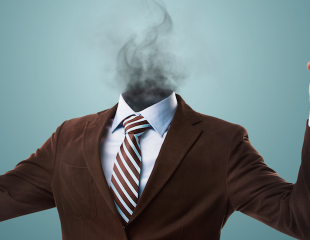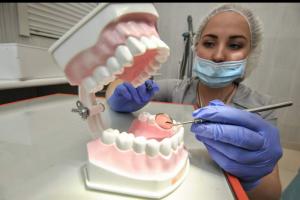It’s hard to imagine your life without stress. The reality of today is the presence of everyday stressful situations, some of which a person withstands with dignity, while others leave a serious imprint and are able to make themselves felt for a long time. Increasingly, stressful situations at work and professional burnout of employees are associated.
 Work without breaks and days off, in emotionally unfavorable conditions, leads to the accumulation of fatigue and depletion of human vitality, which threatens serious diseases of both a psychological and physiological nature.
Work without breaks and days off, in emotionally unfavorable conditions, leads to the accumulation of fatigue and depletion of human vitality, which threatens serious diseases of both a psychological and physiological nature.
What does the term "professional burnout" mean?
In 1974, the term was first voiced by the American psychiatrist Herbert Freidenberger. This concept was introduced into the section on psychology and was originally used to indicate the psychological state of employees who had close contact with clients, as a result of which they experienced emotional overstrain.
The term "burnout syndrome" comes from the English burn-out and implies complete psychological and emotional exhaustion, coupled with feelings of lack of demand and their own futility.
A psychologist from the USA, K. Maslach, worked seriously in this area and made a significant contribution to it, who did serious work and associated this term with people working in the helper sphere (help - “help”). These are doctors and teachers, lawyers and social workers, psychotherapists and priests.
E. Moppoy outlined in 1981 a clear image that determines the emotional state of a worker experiencing professional burnout: "The smell of burning emotional and psychological wiring."
Modern psychologists are sounding the alarm, classifying this syndrome as one of the dangerous professional ailments, which affects those who, by the nature of their activity, are forced to communicate closely with people. Irreversible personality changes with serious mental disorders can result in negative effects on the body.
What areas of activity are most susceptible to the disease
Emotional and professional burnout is currently quite extensive, it extends to the entire area of professional activity, characterized as "person - person." Those most at risk include workers social sphere and educators, advertising and art project managers, doctors, politicians and journalists, businessmen and even psychologists themselves.
 Excessive communication with people contributes to the devastation of the employee. It is more difficult for those who perceive the nature of their occupation as a special mission, a mission to intervene, correct the situation and make sure that people in need are saved. Such a “lifeguard complex” is capable of causing serious harm to the assistant himself, who is facing professional burnout. It is difficult to assess the professional activity of an individual employee right away; you need to see the problem from the outside in order to start corrective measures and help a person.
Excessive communication with people contributes to the devastation of the employee. It is more difficult for those who perceive the nature of their occupation as a special mission, a mission to intervene, correct the situation and make sure that people in need are saved. Such a “lifeguard complex” is capable of causing serious harm to the assistant himself, who is facing professional burnout. It is difficult to assess the professional activity of an individual employee right away; you need to see the problem from the outside in order to start corrective measures and help a person.
It is necessary to pay attention to workaholics who are ready to give themselves to work without rest, denying themselves weekends and holidays, striving to spend at work 24 hours a day. Such people do not find themselves in other areas of life, closing the meaning of their existence only to the profession, thereby excluding the realization in the family, society, losing the opportunity to increase and consolidate self-esteem in another way.
There are facts when a successful teacher, fully realizing himself at work, missed his own children. A person due to emotional dependence and excessive enthusiasm at work suddenly realizes his worthlessness in other areas of activity, while at the same time he breaks down psychologically, feels fatigue, moral and physical exhaustion. An individual trapped in such a trap very rarely leaves the current situation on its own, because it is capable of bringing it to its fatal end.
Who is at risk of burnout at work?

Burnout syndrome threatens certain categories of people at risk in the workplace:
• Workaholics who do not see life in its other manifestations, except for the realization of themselves in the workplace.
• Residents of large cities who are not able to refuse imposed communication with a huge number of unfamiliar or completely unfamiliar people in public places (transport, services, work in a large company).
• Introvert workers who, due to their individual psychological characteristics, are not able to meet professional requirements that require close contact with a large number of different people. Due to their natural shyness, modesty and isolation, they cannot cope with emotional discomfort, the accumulated emotional stress, simply do not have the skills to get rid of negative experiences.
• People who have changed jobs, are on probation, awaiting certification in the professional field. Employees who find themselves in a completely new environment or in an unusual situation that requires them to show new qualities and high efficiency.
• Professional burnout of employees threatens people who have a double feeling caused by a conflict with themselves, when it is necessary to break between family and work, also experiencing all the costs of fierce competition in the professional field.
• Employees over the age of 45, for whom it is difficult to find a new job in our country due to age restrictions. For fear of losing their jobs in an unstable situation and crisis in the country, such employees are in constant stress.
• People who have reached certain heights. Achieving the goal brings a feeling of emptiness, confusion, the meaninglessness of what is happening. There is a feeling of lack of prospects, the meaning of life, doubts about personal and professional insolvency, a decrease in self-esteem.
These are the main factors of professional burnout, as a result of which moral and physical resources are reduced to a critical minimum. The psychological discomfort is not felt immediately, but in the end it leads to the fact that a favorite thing, which occupied all thoughts and all the time that he lived, becomes indifferent at first, then annoying, and ultimately disgusting. The lack of novelty leads to the fact that in the fourth year of activity there is disappointment and devastation, which translates into a mismatch with the requirements of the others and to oneself.
Reasons for professional burnout
To clearly understand the problem, it is necessary to find out the reasons that contributed to the development of burnout at the workplace, then it will be easier to outline ways out of this situation.
Specialists identified the groups that face professional burnout in the first place:
1) people who are mistaken in choosing a profession or are forced to engage in an unloved business for various reasons (for them, work is like hard labor);
2) to employees experiencing a serious internal conflict related to the mismatch of the balanced relationship between household duties and the requirements of the professional sphere;
3) individuals who are forced to firmly defend their conformity in the field of activity in the competitive confrontation in the work collective.

The work environment in constant stress negatively affects employees, while reducing labor productivity, which causes losses to the enterprise. Depletion of vitality can cause psychosomatic disorders. Negatively affect the state of the employee:
• irregular working hours, busy schedules, work without breaks and days off;
• a forced need to constantly emotionally communicate with different people;
• psychological stress in the work team, unfavorable emotional and psychological atmosphere;
• regular stressful situations in the workplace in the absence of emotionally unloading places where stress relief and prevention of professional burnout are carried out with the participation of a psychologist.
What is the manifestation of psychoemotional exhaustion?
Burnout at the Workplace Syndrome is a complex process with a number of specific features. Each person, by virtue of individual character traits, experiences the manifestation of the disease in different ways. Sometimes this is due to the lack of psychological flexibility and is associated with both social (level of remuneration) and biographical features (the ability to resist life difficulties, satisfaction in personal life), and the psychological maturity of the person plays an important role.
A man under the weight of the work that has fallen on him, which he cannot cope with, and is unable to refuse it, begins to fade and grow stale. This process is gradual and is reflected in a loss of motivation, a decrease in the quality of work, negative changes at the intellectual level and serious health problems.
What threatens excessive zeal in the workplace?
Diagnosis of professional burnout most often reveals the following manifestations:
• unreasonable irritability and resentment, a sad feeling and hopelessness;
• tearfulness, depressive symptoms;
• negative thoughts and experiences are actively exaggerated, which do not leave alone day or night;
• migraine attacks, frequent disorders of the gastrointestinal tract;
• nightmares, restless sleep or insomnia;
• a complete breakdown and a feeling of persistent fatigue, which is felt after a prolonged sleep;
• emotional scarcity;
• noticeable weight change (weight loss or excessive fullness);
• indifferent attitude to changes in the environment (there are no proper reactions to novelty, a dangerous situation);
• a feeling of general weakness, reflected at the biochemical level in the body;
• professional burnout causes a drowsy, inhibited state;
• emotional and physical stress causes respiratory failure;
• unreasonable outbursts of anger;
• increased anxiety.

All of the above cannot be ignored, because it threatens with irreversible consequences.
Research scientists
This problem is being actively studied by professionals (Zofnass and Lindner, Kemp and Suter), who actively discussed it at the 12th World Congress, pointing to a number of psychosomatic disorders inherent in this psychological phenomenon.
One of the specialists (V.V. Boyko) outlined the concept of this ailment as a protective mechanism developed for psychological defense, when, under the influence of a traumatic factor, a person’s emotional reactions are blocked.
 The professional burnout of social workers is determined as a response to prolonged stressful situations caused by interpersonal communication in adverse circumstances, as well as the inability to abstract in time from the problems of strangers, letting them through yourself.
The professional burnout of social workers is determined as a response to prolonged stressful situations caused by interpersonal communication in adverse circumstances, as well as the inability to abstract in time from the problems of strangers, letting them through yourself.
Scientists distinguish:
• Emotional exhaustion, which causes emaciation of living resources. The employee is not able to fully perform their professional duties due to the lack of the correct emotional response to the work situation. Very often emotional breakdowns occur.
• The development of a cynical and soulless attitude towards others. A person depersonalizes both colleagues and clients, relations with them are formal. Internal irritation builds up, which is difficult to contain, and over time it spills over into unreasonable conflict situations.
• The professional qualities of the employee are noticeably reduced, cases of incompetent attitude to their duties are becoming more frequent. A complex of guilt for disruptions, doubts about their professional suitability is manifested - all this leads to low self-esteem in professional and personal life. And then complete indifference to what is happening at the workplace is formed.
According to experts, prevention of professional burnout in any team is necessary if management is interested in the efficient operation of the enterprise.
Symptoms of the syndrome in organizations
Very often, entire organizations are burned out due to managerial errors. Most employees experience emotional exhaustion, depersonalization of employees occurs, a pessimistic mood reigns in the team, and lack of initiative is observed.
The reasons for this state of affairs are:
• inconsistent management actions that cause disagreement in the tactical and strategic plans;
• empowerment of employees not enjoying respect and authority in the team;
• there is no clear system of incentives and motivation of staff, or it is ineffective;
• the functional responsibilities of employees are not formulated, often neither the employee nor the manager understands what is included in the responsibilities of an individual.
• biased assessment of labor.

Ineffective work of one employee can negatively affect the entire team. So, the teacher’s professional burnout will affect the children over time, then problems with their parents will come, and then the entire work team will begin to fever.
The following points can be a kind of indicator of professional burnout of an organization:
1. High staff turnover.
2. Young employees are unbearable working conditions, they are forced to quit without having worked even a year.
3. Frequent breaks, tea drinking with reduced motivation.
4. Increased staff conflict caused by the difficult atmosphere in the work team.
5. Professional insolvency of staff, expressed depending on the management team. Increased dissatisfaction with the actions of managers, as well as the helplessness of employees, depending even in small details on the opinion of the head.
Supervisor Tips
• The employee must feel his need at the workplace.
• Remove total control from the head that impedes professional growth, the manifestation of initiative and independence in the workplace.
• Remove competition between employees, causing discord in the team and inconsistency of actions. Without such discomfort, the work will be more productive.
• Clearly formulate job descriptions and define the range of responsibilities.
• Objectively evaluate the contribution of each employee to a common cause.
• Start a room to relieve stress (with sports equipment or music for relaxation).
• The “divide and conquer” policy should be replaced by “unite and conquer”.
In a team with a favorable climate, labor productivity is always higher than in an unfriendly and stressful one.
Professional burnout syndrome: how to avoid?
Knowing the causes of the problem, efforts must be made to prevent it.
 • You should listen to yourself and analyze your condition and behavior.
• You should listen to yourself and analyze your condition and behavior.
• You need to treat your own person with love, treat yourself to small pleasures, take care of external attractiveness.
• Take care of a reasonable alternation of productive activities and outdoor activities.
• Occupation must correspond to abilities, capabilities, character traits and temperament. Only your favorite work can bring satisfaction, the desire to reach heights and believe in yourself.
• You should not do the work with the meaning of your whole life and rob yourself, depriving you of the opportunity to be realized in other areas of life.
• It is necessary to deal with gloomy thoughts, if possible receiving more positive emotions. Thus, the professional burnout of a teacher is unlikely to please the students at whom he breaks down, unable to organize a class. You should go on a field trip with your class or friends, go on a hike, go to the theater, go to the exhibition, in a word, change the situation for a while and gain new positive impressions.
• It is important not to reproach yourself, referring to more successful people, but to live your life, making it fun, not forgetting about your own hobbies and meetings with dear people.
• Get rid of the desire to help everyone to the detriment of oneself. You need to really evaluate your resources.
• Do not be afraid to seek help from a psychologist. Sometimes things spoken aloud help to find a way out, and reasonable advice will never be superfluous.
How to get out of an emotional stupor? Recommendations of specialists
The human body is capable of self-regulation, which will allow you to get out of a difficult situation with proper self-positioning. In advanced situations, the help of specialists is needed, but at the initial stage, as studies of professional burnout have shown, a person can help himself. To do this, you need:
• do not take negative situations to heart, try to ignore them and look at the situation from the side;
• smile and laugh heartily (when appropriate) and perceive the most difficult situations with humor;
• be able to find positive aspects in any problem; • keep out gloomy thoughts, remember happy life moments;
• keep out gloomy thoughts, remember happy life moments;
• physical exercise, which organizes not only the body, but also awakens consciousness, makes it possible to be proud of yourself for the ability to overcome laziness in the morning;
• walks in the fresh air, allowing you to fully enjoy deep breathing and contemplation of nature in any weather;
• communication with the cosmos, God, the Higher mind, fate;
• reading of books;
• air and sun baths;
• the ability to compliment other people not just for something, but just like that.
The ability to appreciate what you have will help to overcome temporary difficulties and prioritize.








